SEA URCHINS FROM AROUND THE WORLD MANY SIZES, WHOLE WITH SPINES OR WITHOUT SPINES
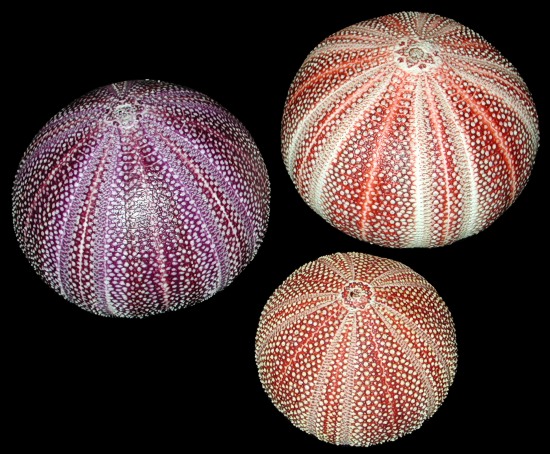
ENGLISH CHANNEL SEA URCHINS
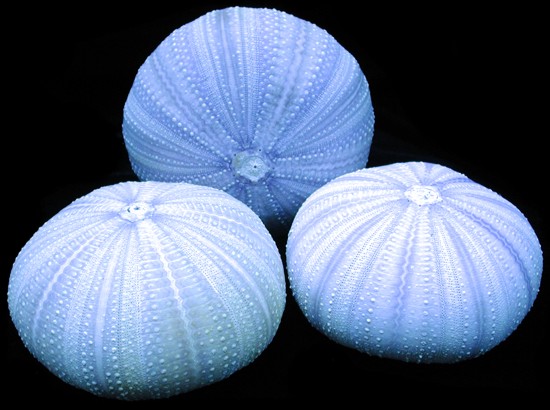
LITE LAVENDER SEA URCHINS (milky color)
BSU2-20
One Lite Lavender Sea Urchin measuring 2 to 3 inches.... OUT OF STOCK
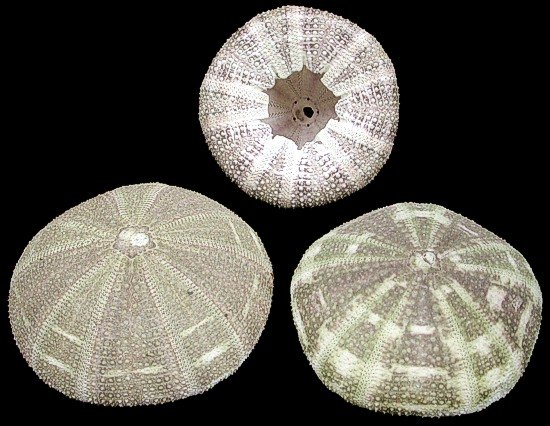
ALFONSO GREEN SEA URCHINS
Tne Alfonso Urchin is popular for its markings. It has a chalky design decorating a green background. It appears that the chalkiness is more pronounced in the more mature urchins, giving the look of being covered by powder.
These specimen are from the Indo-Pacific rim: which ranges from the Western Indian Ocean to the Sea of Japan and Northern Australian shores to the East.
D0-1-20 One Alfonso Sea Urchin 2 to 2 7/8 inches.....OUT OF STOCKD2-20
One Alfonso Sea Urchin measuring 3 to 4 inches ......$1.75
D4-20
One Alfonso Sea Urchin measuring 4 to 4 1/2 inches ...... $4.25
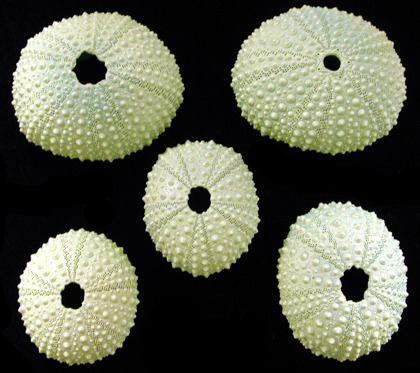
GREEN SEA URCHINS
he shades of green vary. Some urchins are dark green, others lite green while others have a hint of pink mixed into the green.
D2-19
A Green natural color Sea Urchin measuring 1 1/2 to 2 inches...... .89
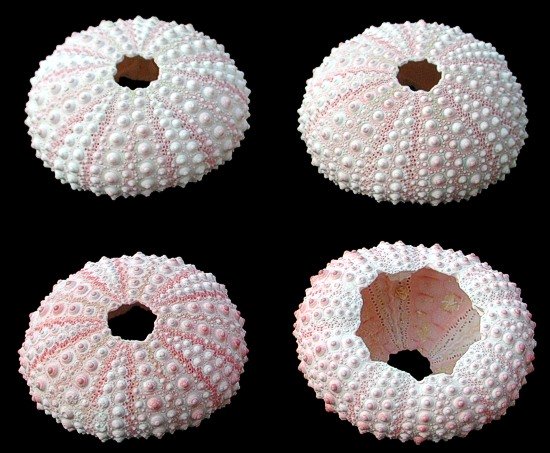
PINK DYED SEA URCHINS
Pink Dyed Urchins are great for crafts. The dyed color ranges between a very light purple to light pink.
ZZ1-19
A Pink Dyed Sea Urchin (Color ranges from light purple to a hint of pink) measuring 3/4 to 1 1/2 inches...... .40
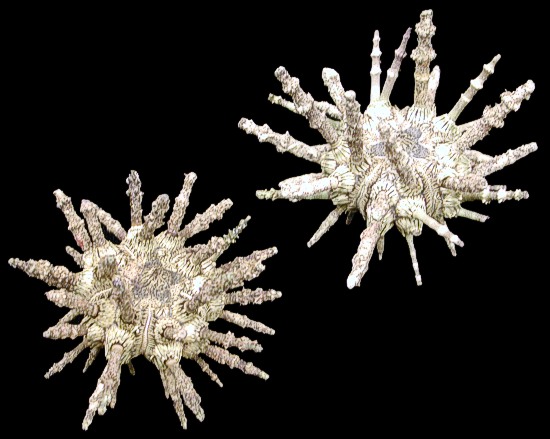
WHOLE SPUTNIK SEA URCHIN
The Imperial Sea Urchin, scientifically known as Phyllacanthus imperialis, belongs to the Cidaridae family. It is also referred to by various names including Imperial Urchin, Pencil Urchin, Lance Urchin, Sputnik Urchin, and several others such as Knobby Sputnik and Land Mine Sea Urchin.
The entire sea urchin, including its spines, is considered part of the organism; some of these spines may be loosely attached and can easily detach.
Q2-17
A Whole Sputnik Urchin measuring approximately 3 inches ...... .45
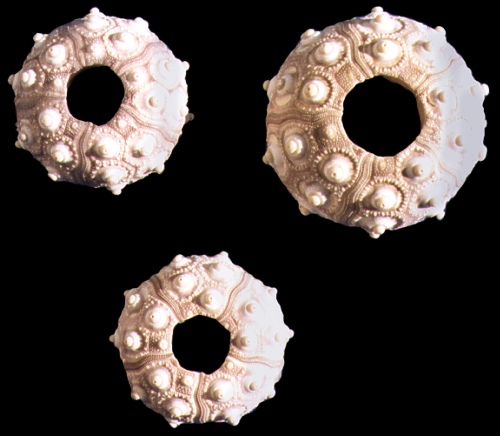
Sputnik Sea Urchin
The Imperial Sea Urchin, scientifically known as Phyllacanthus imperialis, belongs to the Cidaridae family. It is also known by various other names including Imperial Urchin, Pencil Urchin, Lance Urchin, Sputnik Urchin, and several variations of these names, such as Knobby Sputnik Sea Urchin and Land Mine Sea Urchin.
AA2-19
A Sputnik Sea Urchin measuring 1 1/2 to 2 inches....... $1.10
AA1-19
A Sputnik Sea Urchin measuring up to 2 inches....... $1.75
AA3-19
A Sputnik Sea Urchin measuring 3 inches....... $2.80
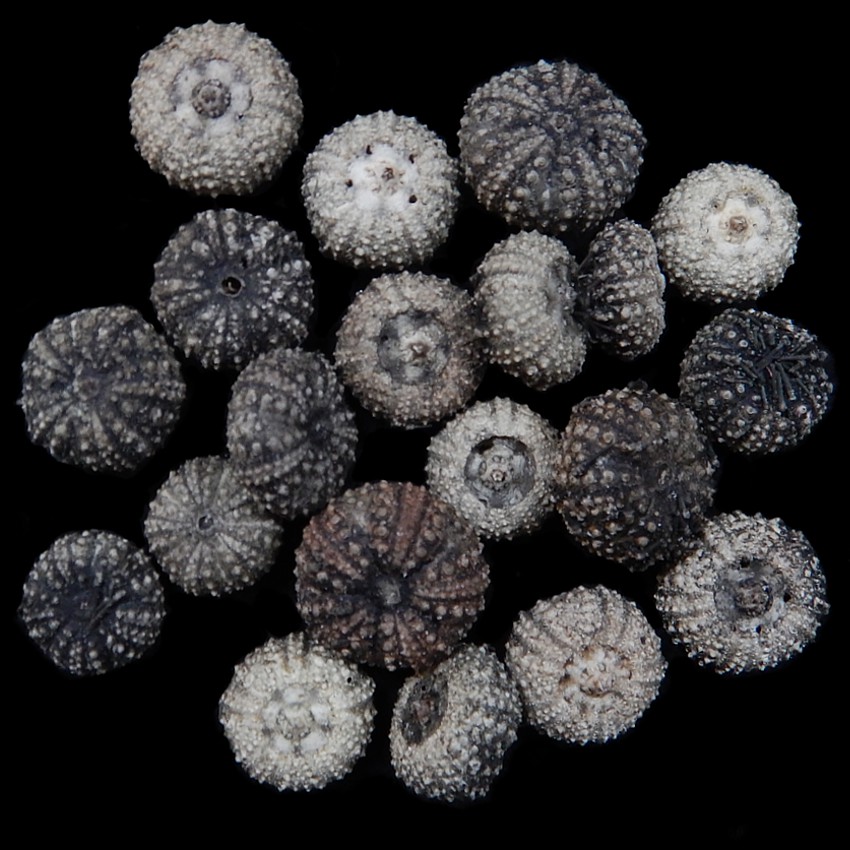
Baby Black Urchins
Diadema antillarum, commonly referred to as the lime urchin, black sea urchin, or long-spined sea urchin, belongs to the sea urchin species within the Diadematidae family.
These Sea urchins are the most abundant and significant herbivores in the coral reefs of the western Atlantic and Caribbean basin. At healthy population levels, they serve as the primary grazers that prevent the overgrowth of algae on the reefs.
Diadema antillarum has a "shell," similar to most other sea urchins. What distinguishes the Diadema is the length of its spines. Most sea urchin spines are 1/3 to 1.25 inches, but the spines in this species are usually 4 to inches length, and can grow as long as 12 inches on very large individuals.
This species typically resides at depths of 3.25 to 33 feet within coral reefs. They frequently embed themselves within crevices, leaving only their spines visible, while those unable to find a crevice inhabit more open areas. Urchins that secure a crevice tend to forage up to 4 feet away from it at night. Diademas, highly sensitive to light, often select their crevices or resting spots based on the available shade..
Diademas primarily consume algae and occasionally seagrass. In times of scarcity, these urchins have been observed adopting carnivorous behavior.
Diademas are located in the tropical Western Atlantic, encompassing the Caribbean Sea, Gulf of Mexico, and the northern and eastern shores of South America, extending as far south as Brazil. They are also present in the Eastern Atlantic near the Canary Islands and throughout the Indian Ocean. Ecologically significant, this species feeds on algae which, if left unchecked, could overgrow and suffocate coral reefs. Their habitat includes the crevices within the reef structure.
Scientific classification
Domain: Eukaryota
Kingdom: Animalia
Phylum: Echinodermata
Class: Echinoidea
Order: Diadematoida
Family: Diadematidae
Genus: Diadema
Species: Diadema antillarum
Binomial name: Diadema antillarum
(Philippi, 1845)
(REF: Kroh, Andreas (2013). Kroh A, Mooi R (eds.). "Diadema antillarum Philippi, 1845". World Echinoidea Database. World Register of Marine Species.)(REF: Farland, K. Clay. Wood, James B. (ed.). "Long-spined Sea Urchin". Marine Invertebrates of Bermuda. Retrieved 2 June 2023)(REF: Osborne, Patrick L. (2000). Tropical Ecosystem and Ecological Concepts. Cambridge: Cambridge University Press.)
BLK1-19
A Baby Black Sea Urchin measuring up to 1.5 inches.... .28
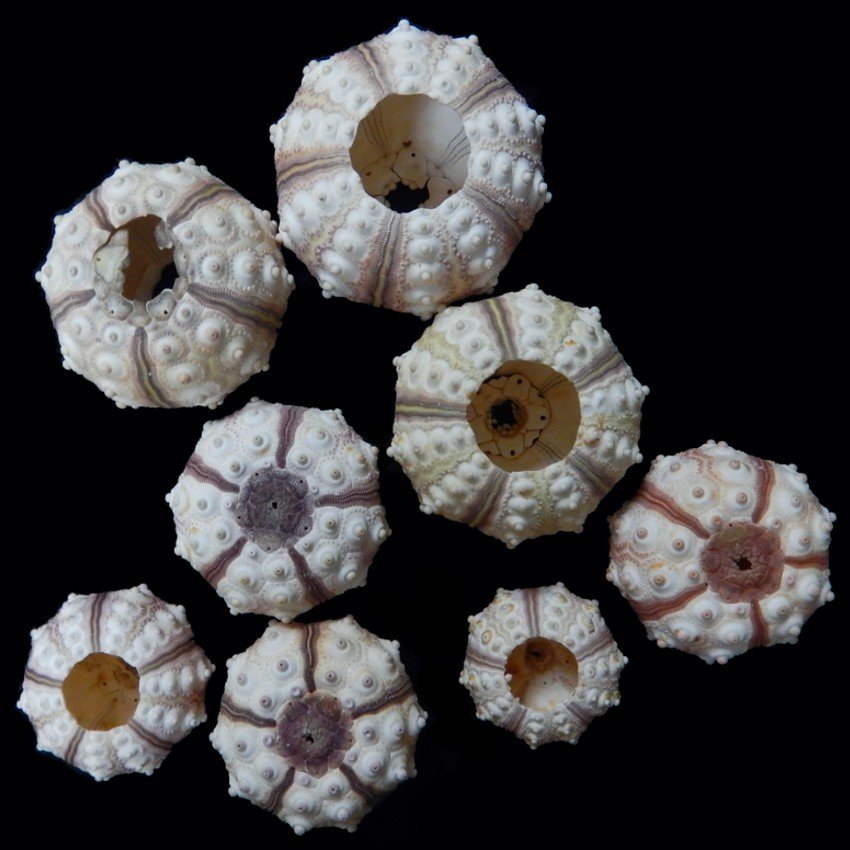
Tiger Sea Urchins
TS1-19
A Tiger Sea Urchin measuring 1 to 1.5 inches...... $1.29
TS2-19
A Tiger Sea Urchin measuring 1.5 to 2 inches...... $1.49
TS3-19
A Tiger Sea Urchin measuring at least 2 inches...... $1.80
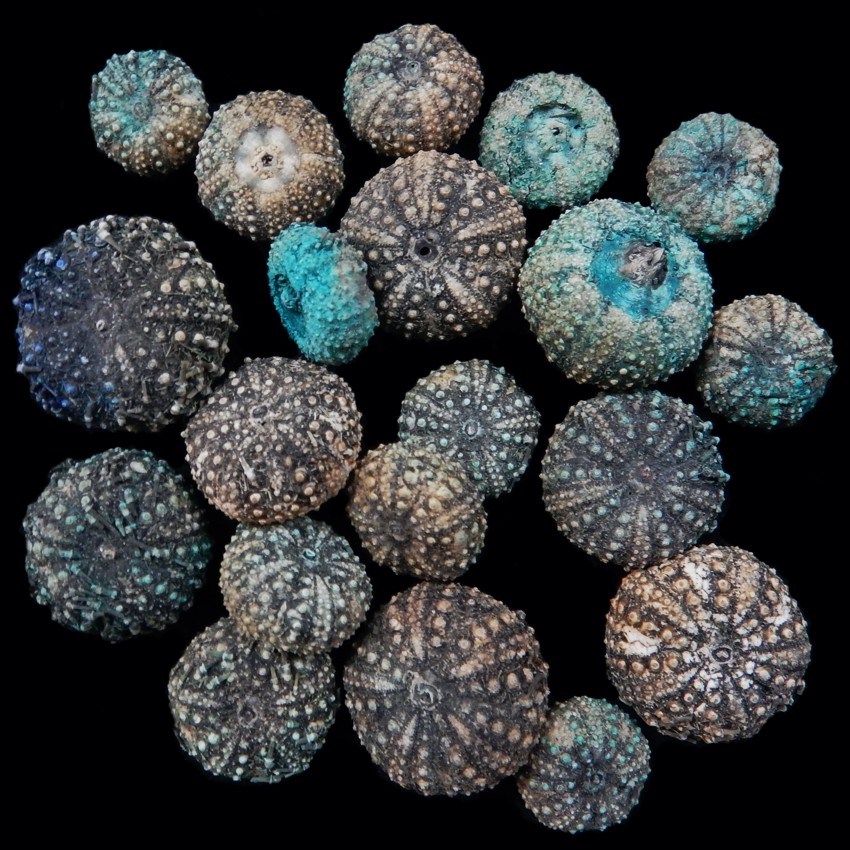
Deepwater Baby Urchins
NO41-17
A Deepwater Baby Urchin measuring approximately 2 inches.... .28
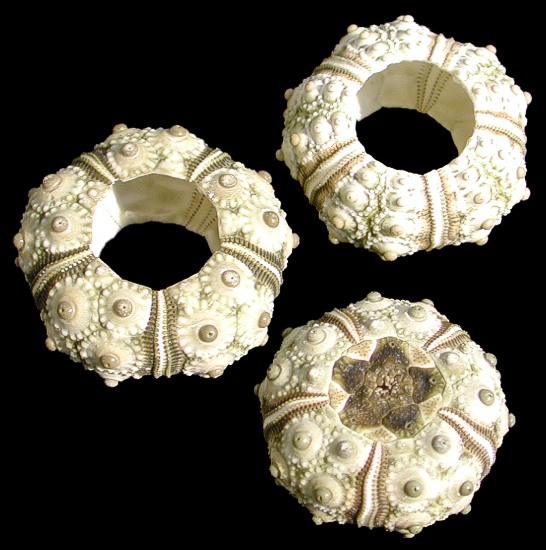
KNOBBY GREEN SEA URCHINS
Most sea urchins do not possess a central star. Please refrain from requesting only those urchins that have stars.
D0-19
A Green Knobby Urchin measuring up to 1 inch...... .29
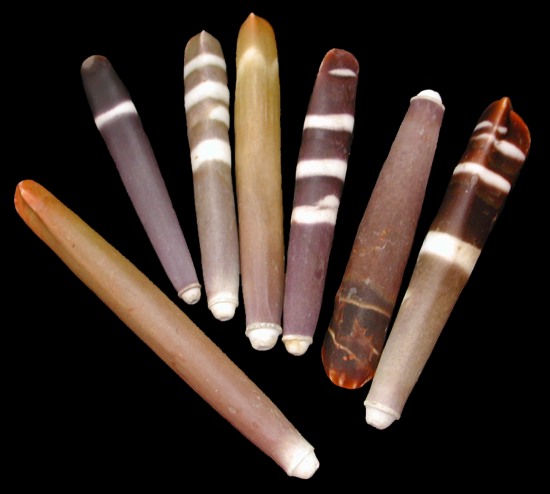
Sea Urchin Spines
WW1-9
A quarter pound of Sea Urchin Spines measuring 1 to 3 inches...... $2.50
WW2-9
A quarter pound of Sea Urchin Spines measuring 3/4 to 1.25 inches...... $3.50
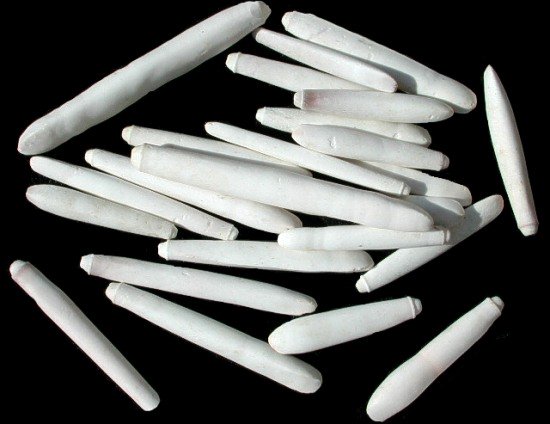
Albino Sea Urchin Spines
Since these urchin spines are natural and unbleached, they are not entirely white.
W2-9
A (natural) Albino Sea Urchin Spine measuring 2 to 3 inches.....OUT OF STOCK
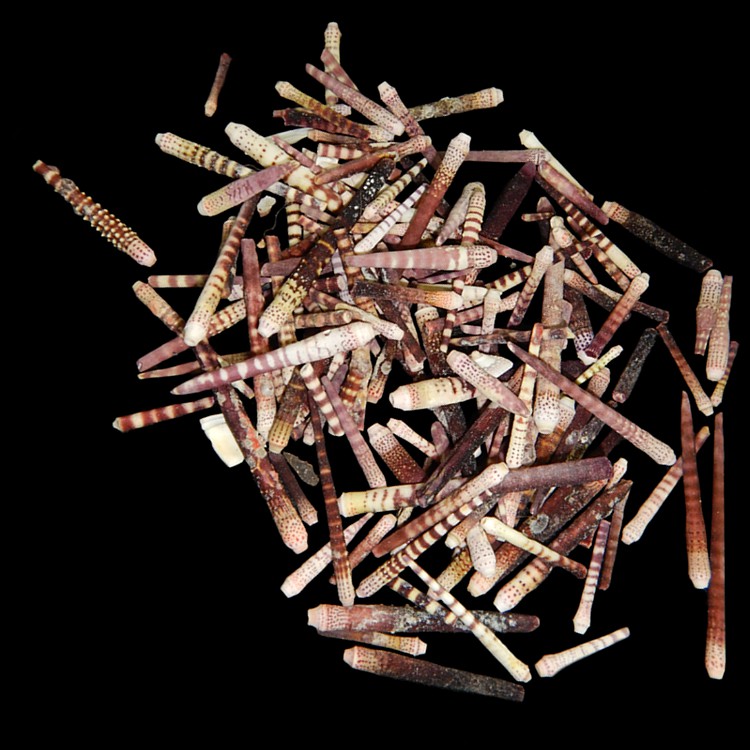
Fire Urchin Spines
FUS1-18
A quarter pound of Fire Urchin Spines measuring 1 to 4 inches.... $2.80